Latifa Oukhellou
Federated Dynamic Modeling and Learning for Spatiotemporal Data Forecasting
Mar 06, 2025



Abstract:This paper presents an advanced Federated Learning (FL) framework for forecasting complex spatiotemporal data, improving upon recent state-of-the-art models. In the proposed approach, the original Gated Recurrent Unit (GRU) module within previous Dynamic Spatial--Temporal Graph Convolutional Recurrent Network (DSTGCRN) modeling is first replaced with a Long Short-Term Memory (LSTM) network, enabling the resulting model to more effectively capture long-term dependencies inherent to time series data. The resulting architecture significantly improves the model's capacity to handle complex temporal patterns in diverse forecasting applications. Furthermore, the proposed FL framework integrates a novel Client-Side Validation (CSV) mechanism, introducing a critical validation step at the client level before incorporating aggregated parameters from the central server into local models. This ensures that only the most effective updates are adopted, improving both the robustness and accuracy of the forecasting model across clients. The efficiency of our approach is demonstrated through extensive experiments on real-world applications, including public datasets for multimodal transport demand forecasting and private datasets for Origin-Destination (OD) matrix forecasting in urban areas. The results demonstrate substantial improvements over conventional methods, highlighting the framework's ability to capture complex spatiotemporal dependencies while preserving data privacy. This work not only provides a scalable and privacy-preserving solution for real-time, region-specific forecasting and management but also underscores the potential of leveraging distributed data sources in a FL context. We provide our algorithms as open-source on GitHub.
A Regression Mixture Model to understand the effect of the Covid-19 pandemic on Public Transport Ridership
Feb 16, 2024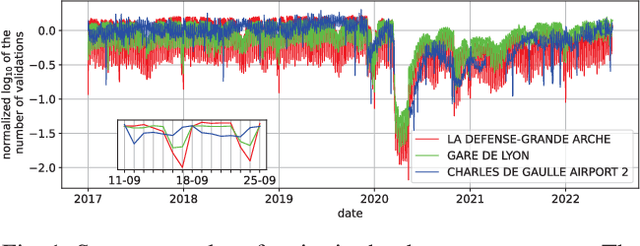
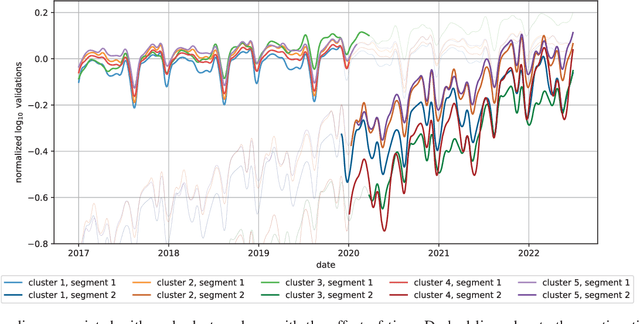

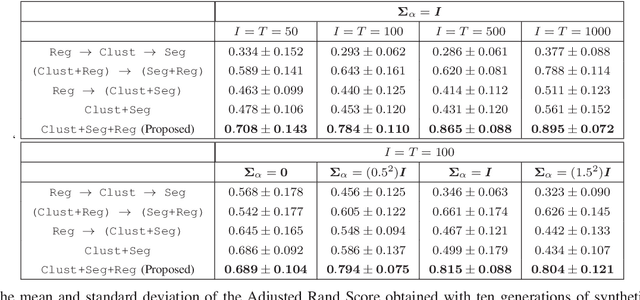
Abstract:The Covid-19 pandemic drastically changed urban mobility, both during the height of the pandemic with government lockdowns, but also in the longer term with the adoption of working-from-home policies. To understand its effects on rail public transport ridership, we propose a dedicated Regression Mixture Model able to perform both the clustering of public transport stations and the segmentation of time periods, while ignoring variations due to additional variables such as the official lockdowns or non-working days. Each cluster is thus defined by a series of segments in which the effect of the exogenous variables is constant. As each segment within a cluster has its own regression coefficients to model the impact of the covariates, we analyze how these coefficients evolve to understand the changes in the cluster. We present the regression mixture model and the parameter estimation using the EM algorithm, before demonstrating the benefits of the model on both simulated and real data. Thanks to a five-year dataset of the ridership in the Paris public transport system, we analyze the impact of the pandemic, not only in terms of the number of travelers but also on the weekly commute. We further analyze the specific changes that the pandemic caused inside each cluster.
Forecasting of the Montreal Subway Smart Card Entry Logs with Event Data
Aug 22, 2020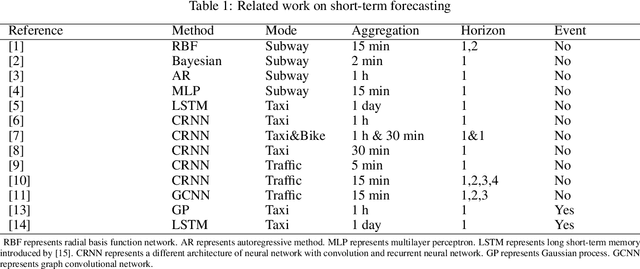

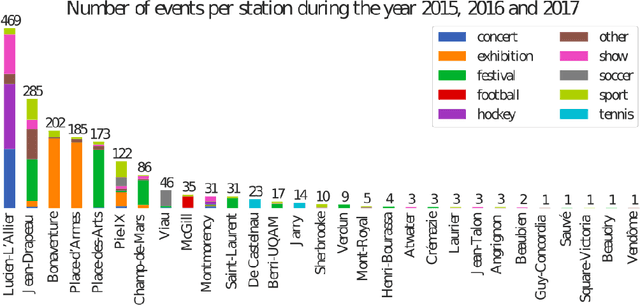

Abstract:One of the major goals of transport operators is to adapt the transport supply scheduling to the passenger demand for existing transport networks during each specific period. Another problem mentioned by operators is accurately estimating the demand for disposable ticket or pass to adapt ticket availability to passenger demand. In this context, we propose generic data shaping, allowing the use of well-known regression models (basic, statistical and machine learning models) for the long-term forecasting of passenger demand with fine-grained temporal resolution. Specifically, this paper investigates the forecasting until one year ahead of the number of passengers entering each station of a transport network with a quarter-hour aggregation by taking planned events into account (e.g., concerts, shows, and so forth). To compare the models and the quality of the prediction, we use a real smart card and event data set from the city of Montr\'eal, Canada, that span a three-year period with two years for training and one year for testing.
Supervised learning of a regression model based on latent process. Application to the estimation of fuel cell life time
Dec 25, 2013
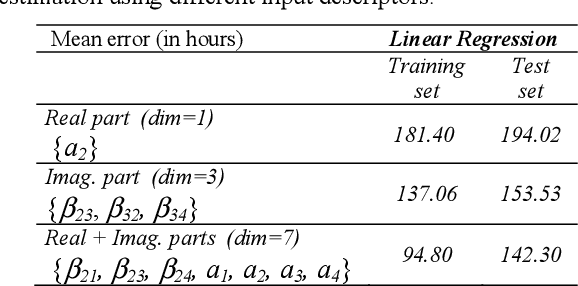
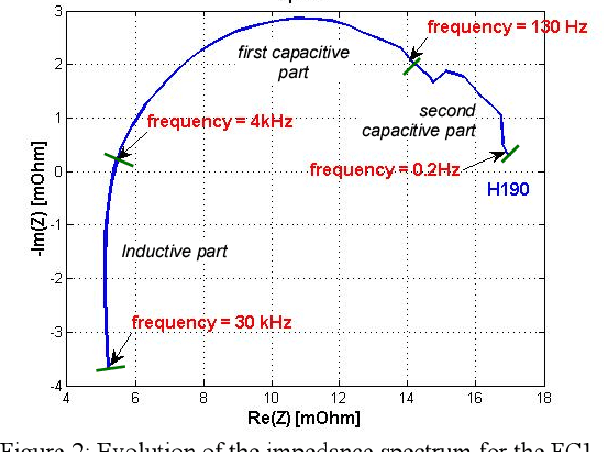

Abstract:This paper describes a pattern recognition approach aiming to estimate fuel cell duration time from electrochemical impedance spectroscopy measurements. It consists in first extracting features from both real and imaginary parts of the impedance spectrum. A parametric model is considered in the case of the real part, whereas regression model with latent variables is used in the latter case. Then, a linear regression model using different subsets of extracted features is used fo r the estimation of fuel cell time duration. The performances of the proposed approach are evaluated on experimental data set to show its feasibility. This could lead to interesting perspectives for predictive maintenance policy of fuel cell.
An Unsupervised Approach for Automatic Activity Recognition based on Hidden Markov Model Regression
Dec 25, 2013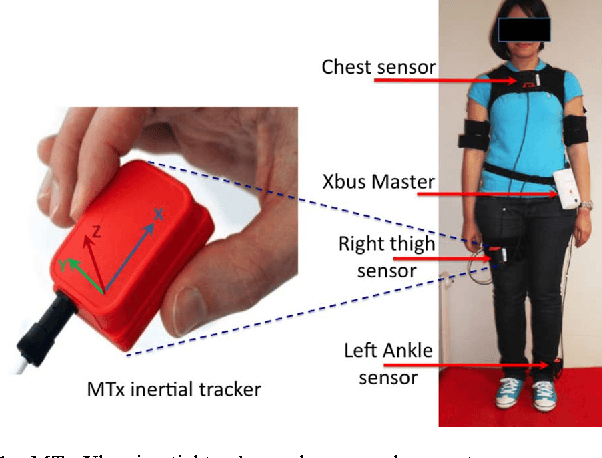
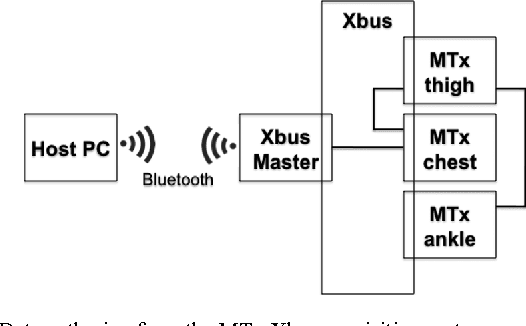
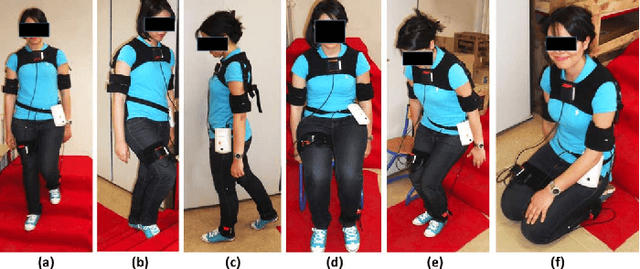
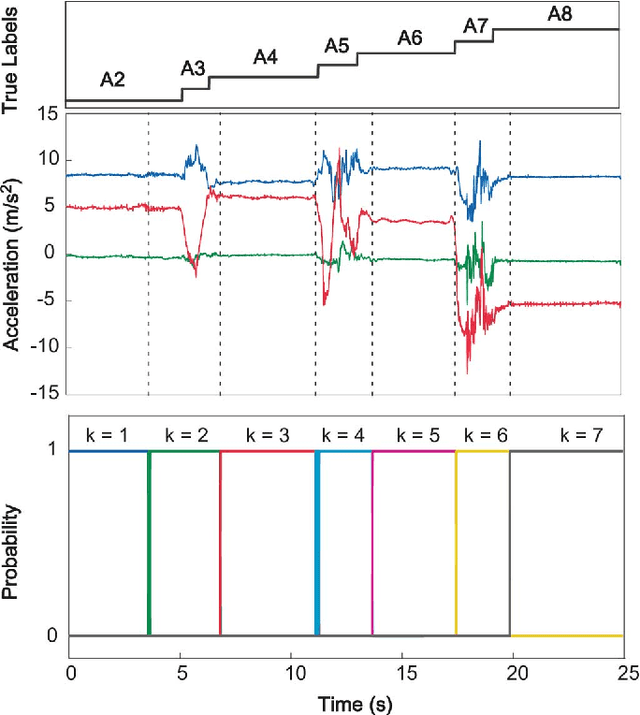
Abstract:Using supervised machine learning approaches to recognize human activities from on-body wearable accelerometers generally requires a large amount of labelled data. When ground truth information is not available, too expensive, time consuming or difficult to collect, one has to rely on unsupervised approaches. This paper presents a new unsupervised approach for human activity recognition from raw acceleration data measured using inertial wearable sensors. The proposed method is based upon joint segmentation of multidimensional time series using a Hidden Markov Model (HMM) in a multiple regression context. The model is learned in an unsupervised framework using the Expectation-Maximization (EM) algorithm where no activity labels are needed. The proposed method takes into account the sequential appearance of the data. It is therefore adapted for the temporal acceleration data to accurately detect the activities. It allows both segmentation and classification of the human activities. Experimental results are provided to demonstrate the efficiency of the proposed approach with respect to standard supervised and unsupervised classification approaches
Joint segmentation of multivariate time series with hidden process regression for human activity recognition
Dec 25, 2013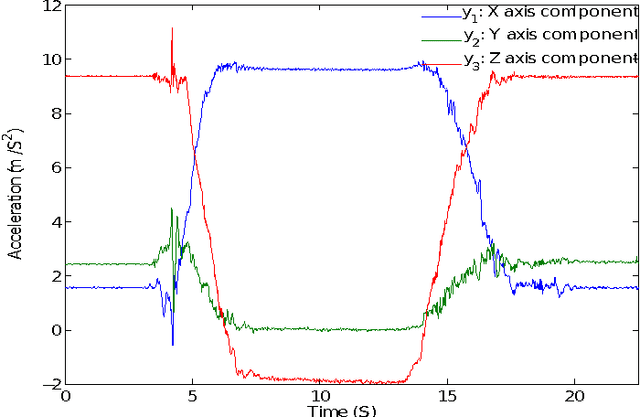
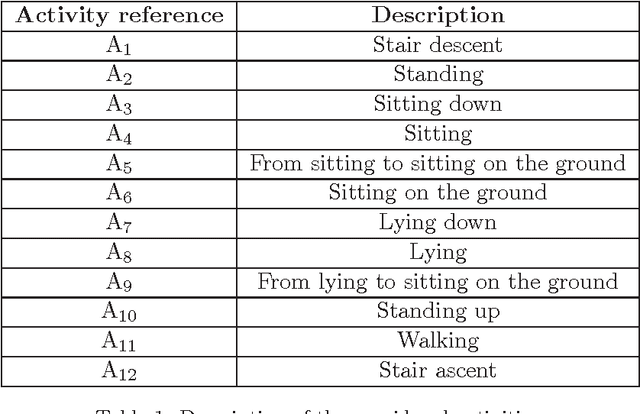
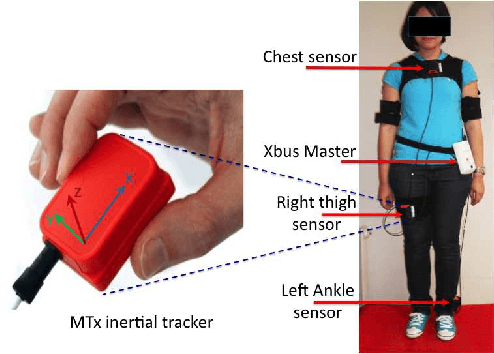
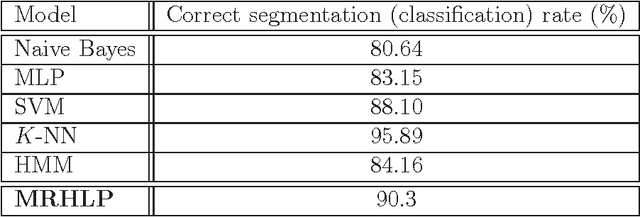
Abstract:The problem of human activity recognition is central for understanding and predicting the human behavior, in particular in a prospective of assistive services to humans, such as health monitoring, well being, security, etc. There is therefore a growing need to build accurate models which can take into account the variability of the human activities over time (dynamic models) rather than static ones which can have some limitations in such a dynamic context. In this paper, the problem of activity recognition is analyzed through the segmentation of the multidimensional time series of the acceleration data measured in the 3-d space using body-worn accelerometers. The proposed model for automatic temporal segmentation is a specific statistical latent process model which assumes that the observed acceleration sequence is governed by sequence of hidden (unobserved) activities. More specifically, the proposed approach is based on a specific multiple regression model incorporating a hidden discrete logistic process which governs the switching from one activity to another over time. The model is learned in an unsupervised context by maximizing the observed-data log-likelihood via a dedicated expectation-maximization (EM) algorithm. We applied it on a real-world automatic human activity recognition problem and its performance was assessed by performing comparisons with alternative approaches, including well-known supervised static classifiers and the standard hidden Markov model (HMM). The obtained results are very encouraging and show that the proposed approach is quite competitive even it works in an entirely unsupervised way and does not requires a feature extraction preprocessing step.
 Add to Chrome
Add to Chrome Add to Firefox
Add to Firefox Add to Edge
Add to Edge